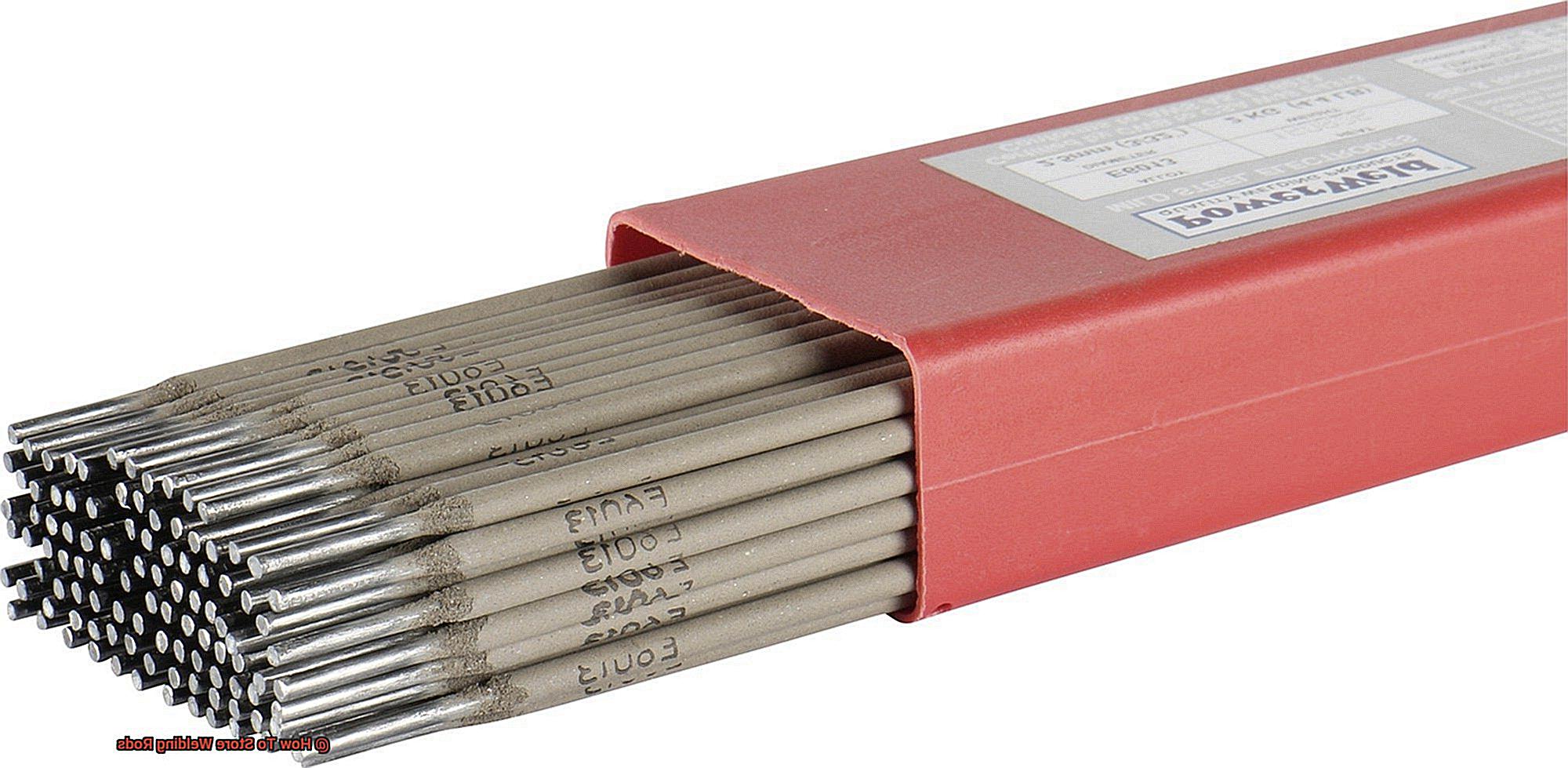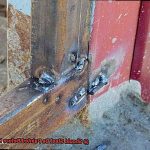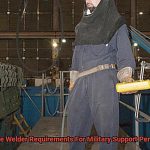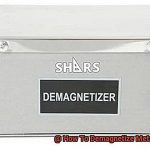As a welder, you understand the importance of selecting the right welding rod for the job.
However, what many welders overlook is how crucial it is to store their welding rods correctly. Improper storage can lead to damaged and unusable rods, which can cause delays and increased costs.
Regardless of your level of experience, knowing how to store your welding rods properly is critical for maintaining the quality of your work. In this blog post, we’ll dive into the best practices for storing welding rods to ensure they remain safe, dry, and protected from damage.
We’ll cover everything from selecting the appropriate container to maintaining optimal temperature and humidity levels. We’ll also highlight common mistakes to avoid and provide tips for identifying and managing damaged rods.
So, let’s get started.
The Importance of Proper Welding Rod Storage
Contents
Welding rods may seem like a small detail in the welding process, but their proper storage is essential to ensure their longevity and effectiveness.
If not stored correctly, welding rods can lead to rust, contamination, and even damage, ultimately affecting the quality and safety of the finished product. The main reason why proper welding rod storage is crucial is to prevent moisture damage.
Moisture can cause rust on the surface of the rods, weakening them and making them more prone to breakage during use. Moreover, moisture can cause hydrogen embrittlement in the weld, leading to weld failure.
To prevent this, welding rods should be stored in a dry place with low humidity levels. Contamination is another potential risk that can arise from improper welding rod storage.
Welding rods can quickly pick up dirt, dust, and other debris if they are not stored correctly. Contamination can affect the quality of the welds and lead to defects or failures.
Therefore, welding rods should be stored in a clean, dust-free environment. Physical damage is another factor that can impact the effectiveness of welding rods if they are not stored properly.
Welding rods can easily be damaged if they are not handled carefully or stored in a safe place. They should be kept in a secure location where they will not be knocked over or damaged by other equipment.
Additionally, they should be stored in a way that prevents them from rubbing against each other or other objects that could cause damage. To ensure proper welding rod storage, it is important to keep the rods in their original packaging or containers designed to protect them from environmental factors.
If the original packaging is damaged or lost, airtight plastic bags or containers with tight-fitting lids can be used as an alternative. It is also crucial to inspect the welding rods before use and discard any that show signs of damage or corrosion.
So, proper welding rod storage is critical to ensure that they remain effective and safe for use. By following the guidelines for storing welding rods, welders can help ensure that their welding rods perform at their best and produce high-quality welds that meet industry standards.
Ideal Storage Conditions for Welding Rods
To maintain the integrity of welding rods, it is crucial to store them at an ideal temperature between 70-100°F (21-38°C). This temperature range ensures that the rods do not absorb moisture from the air, which can lead to porosity, cracking, and other defects during welding.
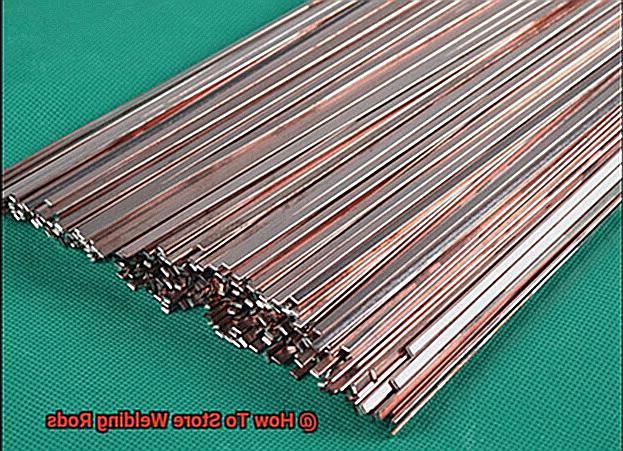
Additionally, proper ventilation is necessary to prevent any buildup of humidity or condensation. Moisture is the enemy of welding rods, and they must be kept away from sources of water or moisture.
Basements or bathrooms with high humidity levels should be avoided at all costs. Direct sunlight or heat sources can also cause welding rods to deteriorate and should be kept out of reach.
To safeguard welding rods from potential damage during transportation or storage, it is best to store them in their original packaging or a container specifically designed for welding rod storage. This will help protect them from any possible contamination or rust buildup.
In summary, ideal storage conditions for welding rods involve maintaining a controlled temperature range between 70-100°F (21-38°C), preventing exposure to moisture or humidity, and storing them in their original packaging or a specialized container.
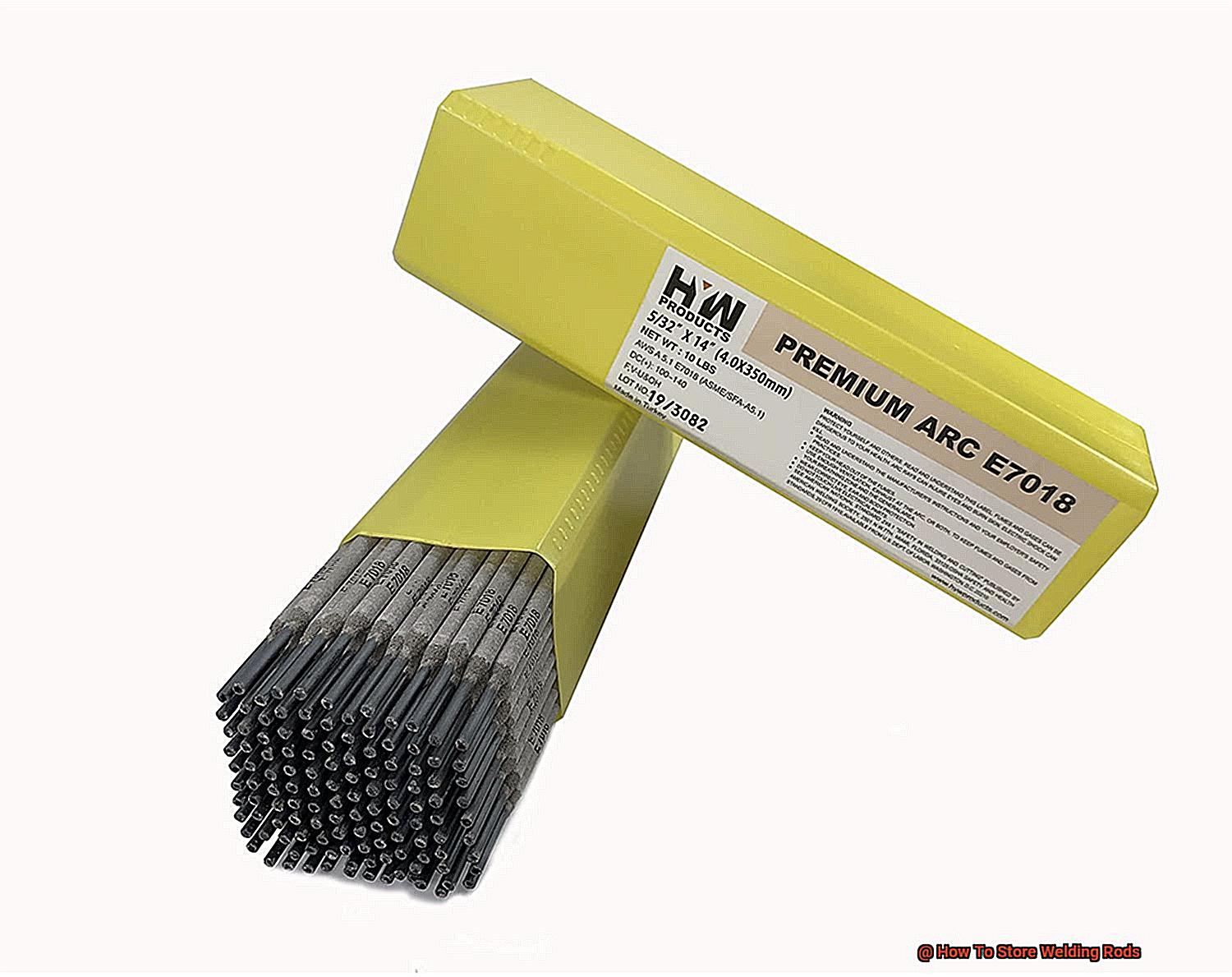
Following these guidelines will ensure that your welding rods maintain their quality and performance for optimal results.
Storing Welding Rods in Their Original Packaging
One of the most effective ways to do that is by storing them in their original packaging.
The packaging is designed to safeguard the welding rods from moisture, dirt, and other pollutants that can impair their quality.
The first step in storing your welding rods in their original packaging is to inspect the packaging for any damage. Any damage to the packaging can compromise its ability to shield the welding rods inside.
Once you have ensured that the packaging is still intact, find a dry and cool place to store your welding rods. Moisture and humidity can penetrate the packaging and cause damage to the welding rods.
It’s also best to keep them away from sources of heat and direct sunlight as they can make the welding rods brittle and prone to breakage. It’s essential to keep your welding rods away from chemicals or materials that could potentially contaminate them.
Store them separately from other items in your workshop or garage, especially those that might contain moisture or dust.
By following these simple steps, you can guarantee that your welding rods remain in perfect condition and are always ready for use whenever you need them.
Considerations for Different Types of Welding Rods
First, low-hydrogen welding rods. These delicate rods are highly sensitive to moisture, so you must take extra care when storing them.
To keep them dry and prevent any damage, store them in airtight containers with desiccants. Avoid exposing them to high humidity levels or extreme temperature fluctuations as this could affect their quality.
Moving on to cellulose-coated electrodes, these require a slightly different storage approach. These rods should be stored in a dry place with good ventilation but not necessarily in airtight containers.
The coating on these rods needs to breathe and release any trapped moisture. So make sure they’re kept in an area with proper airflow.
Now let’s talk about stainless steel welding rods. These must be kept away from carbon steel or any other materials that could contaminate them.
To prevent corrosion, store them in clean and dry containers made of stainless steel or plastic. In addition to these considerations, it’s essential to label your welding rod containers with the type of rod inside and the date of purchase.
Keeping an inventory of your welding rods will help you use the oldest ones first and ensure that you’re using the right type of rod for the job. Remember, proper storage of welding rods is just as important as proper technique during the welding process.
Inspecting Welding Rods Before Use
When it comes to welding, the quality of the weld depends on the quality of your welding rods.
Inspecting welding rods before use is a crucial step in ensuring the quality of your weld. Welding rods can become damaged or contaminated during storage or handling, which can lead to poor weld quality or even failure.
The first step in inspecting welding rods is to check for any physical damage. This includes looking for cracks, bends, or other signs of wear and tear.
A damaged welding rod could compromise the integrity of the weld and cause problems during the welding process. Therefore, it’s crucial not to use any damaged welding rod.
Once you have checked for physical damage, it’s time to look for signs of contamination. Welding rods that have been exposed to moisture or other contaminants can become rusty or discolored, which can affect their performance.
If there is any discoloration or rust on the welding rod, it should not be used. It is also important to check for oil or grease on the surface of the welding rod as these contaminants could cause porosity in the weld and compromise its strength.
Make sure to clean any oil or grease off of the welding rod before use. In addition to physical damage and contamination, it’s important to check the classification of your welding rod.
Different types of welding rods are designed for different materials and applications, and using the wrong type of welding rod can lead to poor weld quality or failure. Therefore, make sure that you are using the appropriate welding rod for your specific job at hand.
By carefully inspecting your welding rods for physical damage, contamination, and classification, you can avoid potential problems and ensure that your welds are strong and reliable.
Benefits of Properly Storing Welding Rods
Improperly stored welding rods can lead to weld defects, shorten their shelf life, and even pose a threat to the welder’s safety.
Here, I will explain the benefits of properly storing welding rods.
- Firstly, storing your welding rods correctly results in improved weld quality. Strong and reliable welds require consistent and reliable composition of welding rods. Environmental factors and moisture can contaminate welding rods, leading to defects such as porosity and cracking that can compromise the quality of the weld. Proper storage ensures that your welding rods remain uncontaminated and consistent, resulting in better welds.
- Secondly, by storing your welding rods correctly, you can increase their shelf life. Welding rods that are not exposed to moisture have a longer shelf life than those that are improperly stored. This means you can save money by not having to replace old or damaged welding rods as frequently.
- Thirdly, proper storage of welding rods saves you money in the long run. By reducing the need for replacement rods, you can save on the cost of purchasing new ones. Additionally, by reducing defects in the weld, you can save money on rework and repair costs.
- Fourthly, storing your welding rods correctly ensures better safety for the welder. Moisture-contaminated electrodes can cause explosions or emit hazardous fumes during use, posing a risk to the welder.
Proper storage reduces this risk and ensures a safer work environment for the welder. Finally, it’s worth remembering that properly storing your welding rods is often a requirement for compliance with industry standards such as AWS D1.1 Structural Welding Code.
Compliance with industry standards not only ensures quality but also opens up opportunities for more significant projects and clients. In conclusion, proper storage of welding rods is essential for improving weld quality, increasing shelf life, saving costs, ensuring welder safety, and complying with industry standards.
dPTv8-rmRDk” >
Conclusion
In conclusion, the storage of welding rods is a crucial aspect of welding that should not be overlooked.
Welding rods are sensitive to moisture, contamination, and physical damage, which can significantly affect the quality of the welds and increase costs. To prevent this, it’s essential to store welding rods in a dry place with low humidity levels, away from sources of water or moisture.
Additionally, keeping them in a clean and dust-free environment and storing them in a way that prevents physical damage is equally important. Welding rods should always be kept in their original packaging or containers designed to protect them from environmental factors.
Inspecting welding rods before use is also crucial to ensure their quality and avoid potential problems during the welding process. Different types of welding rods require specific storage conditions to maintain their effectiveness and longevity.
Properly stored welding rods not only improve weld quality but also increase shelf life, save costs, ensure welder safety, and comply with industry standards.
